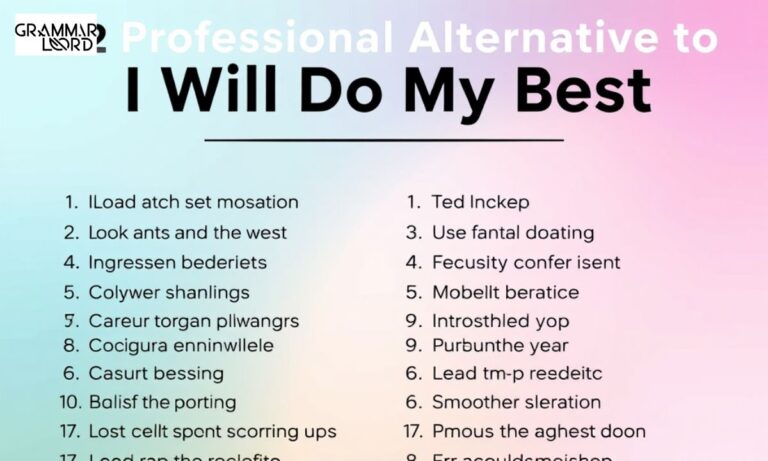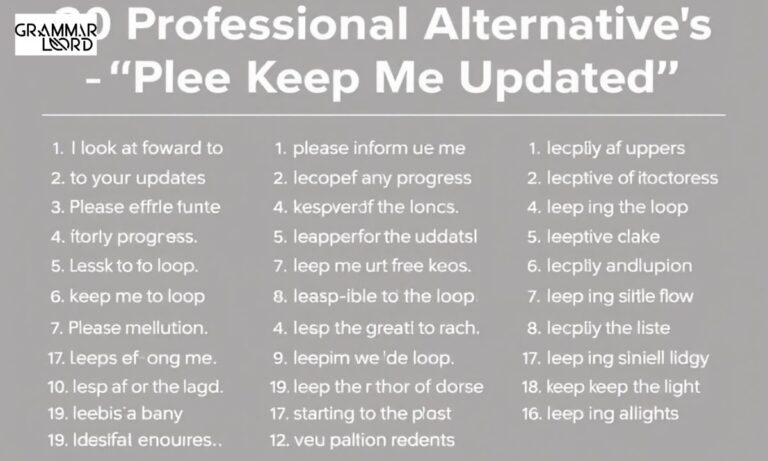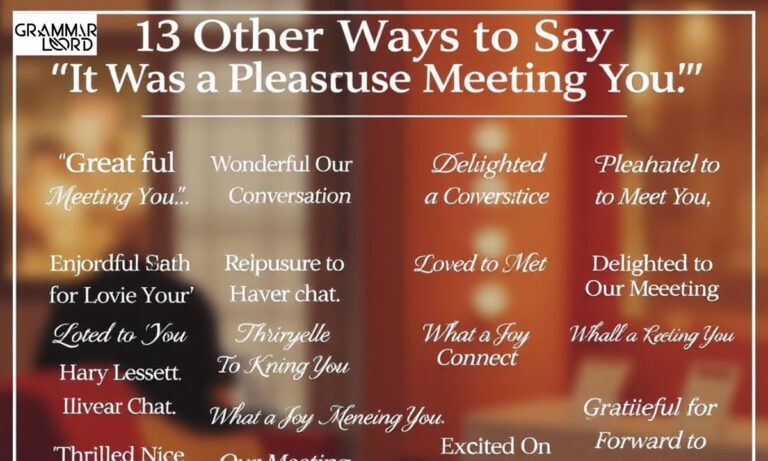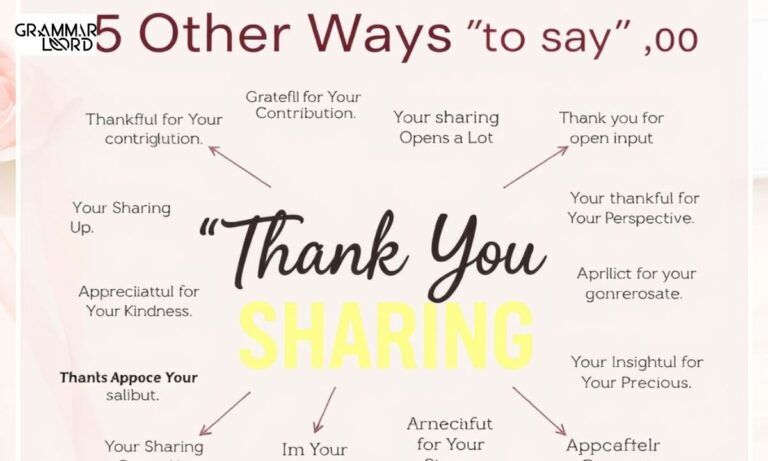
20 Alternative Ways to End a Letter Without a Salutation
Sometimes, ending a letter without a typical salutation like “Sincerely” or “Best regards” feels more natural. Whether you’re writing a casual email, a professional message, … Read more

Sometimes, ending a letter without a typical salutation like “Sincerely” or “Best regards” feels more natural. Whether you’re writing a casual email, a professional message, … Read more

Sometimes, saying “I will do my best” might not sound professional or confident enough in the workplace. Whether you’re responding to a boss, a client, … Read more

Staying informed is important in professional communication. Whether you’re waiting for project updates, client feedback, or team progress, asking for updates professionally makes a good … Read more

Meeting new people is always a great opportunity, and expressing gratitude afterward leaves a good impression. Instead of saying “It was a pleasure meeting you,” … Read more

Expressing gratitude for a lunch invitation or shared meal is an essential part of building and maintaining strong relationships, whether personal or professional. A simple … Read more

Expressing gratitude is a cornerstone of effective communication and relationship-building. When someone shares their thoughts, ideas, or resources with you, it’s essential to acknowledge their … Read more

When someone is unwell, expressing care and support through thoughtful words can make a significant difference in their recovery journey. While “get well soon” is … Read more

The phrase “coming soon” is commonly used to build anticipation for upcoming products, events, or announcements. However, using alternative expressions can make your message more … Read more

Expressing interest in someone’s vacation is a thoughtful way to connect and encourage them to share their experiences. Instead of repeatedly using “I hope you … Read more

Expressing well-wishes for someone’s endeavors is a thoughtful way to show support and encouragement. While phrases like “I hope everything goes smoothly” are commonly used, … Read more